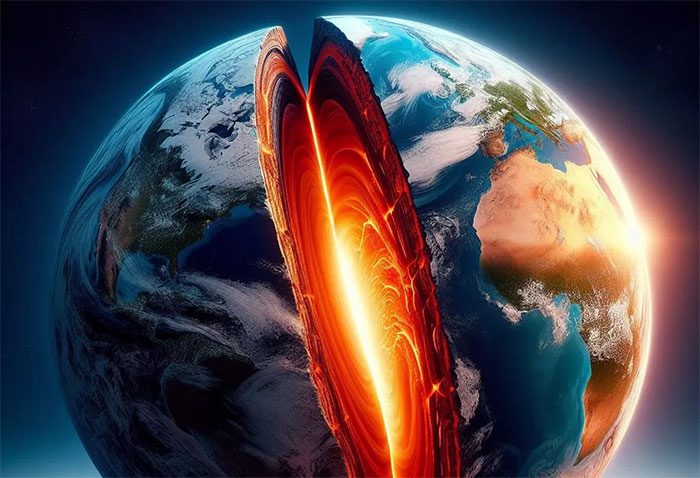The Strange Earthquakes in Vogtland, Germany, Near the Czech Border, May Indicate Unusual Activity Beneath the Earth’s Surface.
The earthquakes in Vogtland are considered unusual because this area is not located on the boundary of any tectonic plates. Tectonic plates are understood as the pieces of the Earth’s crust that constantly move, often causing geological activities such as earthquakes and volcanic eruptions at the edges of each plate.
To explain this phenomenon, a team of scientists led by Dr. Torsten Dahm, a geophysicist at the GFZ German Research Centre for Geosciences, has implemented a new network of seismometers in the region.
From this, they have identified a surprising mechanism that may be the cause of the earthquakes.

Beneath the thin crust of the Earth are hot structures including the upper mantle, lower mantle, outer core, and inner core – (AI graphic).
These seismometers recorded a series of earthquakes at the end of March that were distinctly different from previous seismic activities in the area.
Specifically, the epicenters of these earthquakes appeared to have shifted 15 kilometers north compared to earlier quakes, suggesting that instead of occurring along a vertical fault line, these earthquakes seem to be related to a horizontal structure.
This indicates a complex seismic situation beneath this picturesque region characterized by rolling hills and lush green meadows.
Speaking to Live Science, Dr. Dahm stated that the reasons for the earthquakes in the area remain unclear, but they could very well be the result of CO2 bubbling from magma at a depth of about 50 kilometers.
However, there are no active volcanoes in the region, and there is very little evidence of ancient volcanic activity.
One scenario that could explain this is: In a rare event, magma from the mantle beneath the area has leaked upward, escaping into the crust.
The pressure within the crust may keep this magma from erupting, but it could accumulate within the crust over time.
This leads to two possibilities:
- First, over the next tens to hundreds of thousands of years, new volcanoes may develop in the area.
- Second, a more subdued scenario: They may simply remain trapped there, moving and causing minor earthquakes.
This discovery hints at the phenomenon of magma leaking from the mantle could also help explain the strange earthquakes occurring in other parts of the world.
The mantle is the layer just below the crust in the Earth’s structure, where many complex geophysical and geochemical processes take place that affect the development of the planet and everything that exists on its surface.


















































